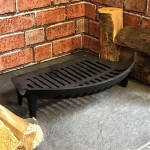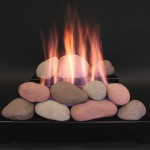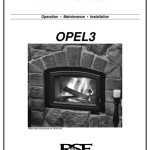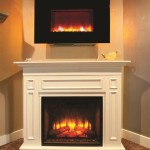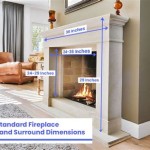Valor Fireplace Pilot Light Out: Troubleshooting and Solutions
Valor fireplaces, renowned for their efficient heating and aesthetic appeal, are a common fixture in many homes. A crucial component of their operation is the pilot light. This small, continuous flame is responsible for igniting the main burner when heat is required. When the pilot light goes out, the fireplace will not function, leaving owners in the cold and potentially leading to frustration. Addressing a pilot light outage requires a systematic approach to identify and resolve the underlying cause. This article provides a comprehensive guide to diagnosing and rectifying situations where a Valor fireplace pilot light is out.
Understanding the Pilot Light System
The pilot light system in a Valor fireplace, like most gas fireplaces, is a relatively simple yet essential mechanism. It consists of a pilot burner, a thermocouple, and a gas valve. The pilot burner delivers a small, continuous stream of gas, which is then ignited to produce the pilot flame. The thermocouple, a small metal rod positioned in the pilot flame, generates a small electrical current when heated. This current is crucial because it signals the gas valve to remain open, allowing gas to flow both to the pilot burner and the main burner when the thermostat calls for heat. If the thermocouple does not detect the pilot flame, it shuts off the gas supply as a safety measure, preventing the accumulation of unburnt gas inside the firebox.
The gas valve, controlled by the thermocouple and the thermostat, regulates the flow of gas. When the thermostat is off, only the pilot burner receives gas, maintaining the pilot flame. When the thermostat calls for heat, the gas valve opens further, allowing gas to flow to the main burner, resulting in the larger, more visible flames that provide warmth. An understanding of these components and their interaction is fundamental to troubleshooting pilot light problems.
Several factors can disrupt this delicate balance. A weak or malfunctioning thermocouple, a blocked pilot burner, a faulty gas valve, or a disruption in the gas supply can all cause the pilot light to extinguish. The specific symptoms exhibited by the fireplace can often provide clues about the root of the problem. For example, if the pilot light ignites but fails to stay lit after releasing the pilot knob, the thermocouple is a likely suspect. Conversely, if the pilot light refuses to ignite at all, the problem may lie with the gas supply or a blockage in the pilot burner.
Common Causes of Pilot Light Extinguishment
Pilot light outages are a common issue with gas fireplaces, and several factors contribute to their occurrence. Identifying the specific cause is the first step towards a successful resolution. These causes can range from simple, easily remedied issues to more complex problems requiring professional intervention.
One of the most common causes is a dirty or clogged pilot burner. Over time, dust, debris, and soot can accumulate within the pilot burner orifice, restricting the flow of gas. This restricted flow results in a weak or unstable pilot flame, which is insufficient to properly heat the thermocouple. The result is that the thermocouple shuts off the gas supply, extinguishing the pilot light. This problem is often exacerbated by infrequent fireplace maintenance and a lack of regular cleaning.
A malfunctioning thermocouple is another frequent culprit. As mentioned earlier, the thermocouple generates a small electrical current when heated by the pilot flame. If the thermocouple is old, damaged, or corroded, it may not produce sufficient current to keep the gas valve open. This results in the gas valve closing and extinguishing the pilot light shortly after the pilot knob is released. Thermocouples are relatively inexpensive and easy to replace, making this a common and often straightforward repair.
Drafts can also cause a pilot light to go out. A strong draft blowing directly into the firebox can extinguish the pilot flame, especially if the flame is already weak due to a dirty burner or a failing thermocouple. Drafts can originate from various sources, including open windows, doors, or even the fireplace chimney itself. Identifying and mitigating these drafts can often resolve the issue.
Furthermore, a disruption in the gas supply can lead to pilot light problems. This could be due to a problem with the main gas line supplying the house, a closed gas shut-off valve, or a regulator malfunction. If other gas appliances in the house are also experiencing problems, a gas supply issue is the most likely cause. It is crucial to address gas supply problems with caution, as they can pose a significant safety risk.
Finally, a faulty gas valve can prevent the pilot light from staying lit. The gas valve is responsible for regulating the flow of gas to both the pilot burner and the main burner. If the valve is malfunctioning, it may not open fully or may close prematurely, leading to pilot light extinguishment. Gas valve issues often require replacement of the entire valve, which is best left to a qualified technician.
Troubleshooting Steps and Solutions
When a Valor fireplace pilot light goes out, there are several troubleshooting steps that homeowners can take before calling a qualified technician. These steps involve a combination of visual inspection, basic maintenance, and careful evaluation of the fireplace's behavior. Always ensure the gas supply to the fireplace is shut off before performing any maintenance or repairs. While many problems can be resolved with do-it-yourself efforts, safety should always be the paramount concern.
The first step is to visually inspect the pilot burner area. Look for any signs of blockage, such as dust, debris, or soot. Use a small brush or a can of compressed air to carefully clean the pilot burner orifice. Ensure that the area around the pilot light is free of obstructions that could interfere with the flame. Reassemble the pilot assembly (if disassembled for cleaning) and attempt to relight the pilot light according to the manufacturer's instructions. If the pilot light ignites and stays lit after cleaning, the problem is likely resolved.
If cleaning the pilot burner does not solve the problem, the thermocouple may be the issue. To test the thermocouple, first ensure the pilot light is lit. Hold the pilot knob in for the required amount of time (usually 20-30 seconds) and then release it. If the pilot light extinguishes immediately after releasing the knob, the thermocouple is likely faulty. Replacing the thermocouple is a relatively straightforward task. Locate the thermocouple connection at the gas valve, disconnect the old thermocouple, and install a new one. Ensure the connection is secure and then relight the pilot light.
Check for drafts that may be extinguishing the pilot flame. Close any nearby windows or doors and eliminate any other potential sources of drafts. Observe the pilot flame to see if it is flickering or being blown around by a draft. If drafts are identified as the problem, consider installing a draft guard around the fireplace or taking other measures to reduce airflow in the area. Sometimes the location is just naturally prone to drafts and a qualified technician can help evaluate alternate solutions.
If the pilot light still refuses to stay lit, verify that the gas supply to the fireplace is turned on. Locate the gas shut-off valve, usually located near the fireplace or in the basement, and ensure that it is in the open position. If the valve is closed, open it and try relighting the pilot light. If the gas supply has been interrupted, it may take a few minutes for the gas to reach the pilot burner, so be patient and try relighting after a short delay.
In some cases, a faulty gas valve may be the cause of the problem. Diagnosing a gas valve issue typically requires specialized tools and knowledge. If you suspect a faulty gas valve, it is best to contact a qualified technician for assistance. Attempting to repair or replace a gas valve without proper training and experience can be dangerous.
Finally, remember the importance of regular maintenance. Annual cleaning and inspection of the fireplace, including the pilot light system, can help prevent future problems. A qualified technician can perform a thorough inspection of all components, identify potential issues before they become major problems, and ensure that the fireplace is operating safely and efficiently.
When dealing with gas appliances, safety should always be the top priority. If you are uncomfortable performing any of these troubleshooting steps or if you suspect a more serious problem, it is best to contact a qualified technician for assistance. A professional can accurately diagnose the problem and perform the necessary repairs safely and effectively. Attempting to fix a gas appliance without proper training and experience can be dangerous and could result in serious injury or property damage. Remember to always follow the manufacturer's instructions and guidelines when operating and maintaining your Valor fireplace.

Fireplace Pilot Light Tutorial

How To Light A Pilot Manually Legend Valor Gas Fireplace Insert

How To Light The Pilot In Your Valor Fireplace Faqs

Valor Remote Initiating

Valor Smart Features 5 Day Pilot Shutdown Fireplaces Blog

How To Light A Gas Fireplace

Valor Remote Turning Fireplace On And Off

Why Would A Pilot Light Go Out Dreifuss Fireplaces

Gas Fireplace Pilot Light Out How Can I It Again

Gas Fireplace Pilot Light Won T Stay Lit Easy Fix

